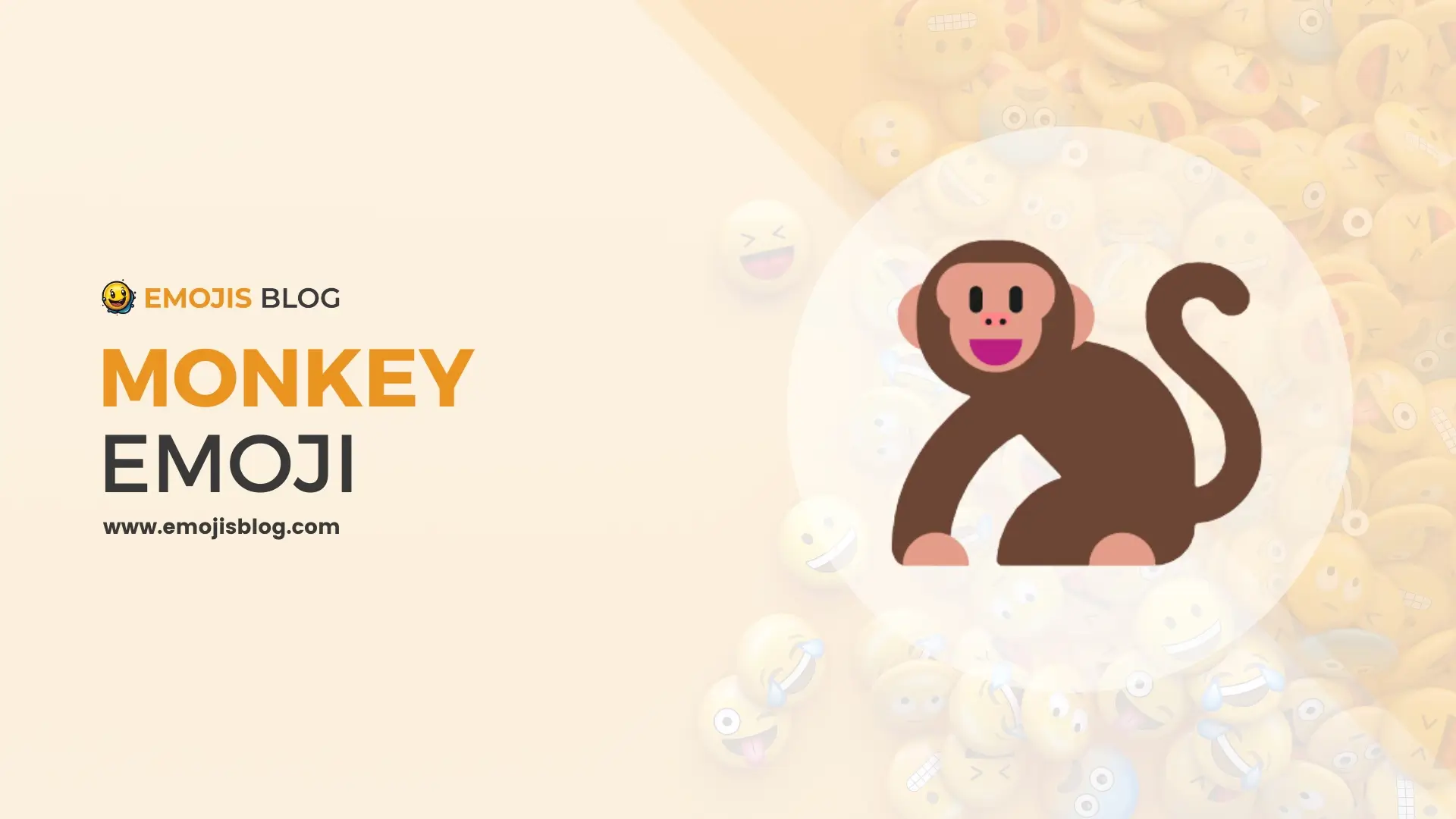What Does The Monkey Emoji 🐒 Mean?
🐒
Monkey Emoji 🐒 Meaning
The monkey emoji 🐒 is a digital icon that represents the playful and mischievous characteristics of a monkey. It is commonly used in digital communication to express playfulness, fun, mischief, and sometimes embarrassment or shyness. Due to its cute and innocent appearance, it’s also often used to convey a sense of innocence or to lighten the mood in a conversation. The monkey emoji is part of a family of emojis that include the “see no evil, hear no evil, speak no evil” monkeys, each with its own distinct meaning.
Technical Information
| Feature | Description |
|---|---|
| Unicode | U+1F412 |
| Character code | UTF-8: F0 9F 8D 92 |
| Short Name | monkey |
| Category | Animal, Mammal |
| Version | 6.0 |
| Tags | playful, mischievous, silly, fun, embarrassed, awkward |
| Related emojis | chimpanzee, orangutan, monkey face, hear-no-evil monkey, see-no-evil monkey, speak-no-evil monkey |
Decoding the Monkey Emoji 🐒 : Playfulness, Mischief, and More
The monkey emoji is one of the most versatile and playful emojis available. Its innocent face and mischievous grin can convey a wide range of emotions, from pure joy and silliness to cheeky naughtiness and lighthearted insult. But what does the monkey emoji really mean?
Unmasking the Meaning:
The monkey emoji’s primary meaning lies in its association with playfulness and mischief. Monkeys are known for their energetic nature, love of games, and tendency to get themselves into trouble. These characteristics are reflected in the emoji’s playful expression, conveying a sense of fun and lightheartedness.
However, the monkey emoji can also be used to express embarrassment or awkwardness. This meaning often arises from the emoji’s association with covering one’s eyes or mouth, similar to the “see no evil, hear no evil, speak no evil” monkeys.
In some cases, the monkey emoji can take on a more negative connotation, implying immaturity or silliness. This usage typically arises when someone wants to tease or poke fun at another person’s behavior.
Context is Key:
The true meaning of the monkey emoji can vary greatly depending on the context in which it’s used. Here are some factors to consider:
- Tone of the message: Is the message playful, serious, or sarcastic? This will influence the interpretation of the emoji.
- Relationship between the sender and recipient: Are they close friends, casual acquaintances, or strangers? This can affect how the emoji is perceived.
- Additional emojis: Are there other emojis used alongside the monkey emoji? These can provide additional clues about the intended meaning.
When to Use the Monkey Emoji:
Here are some situations where the monkey emoji can be used effectively:
- To express playfulness and silliness: This is the most common use of the emoji, and it can add a touch of humor to any message.
- To show embarrassment: If you’ve said or done something awkward, you can use the monkey emoji to lighten the mood and show that you’re not taking yourself too seriously.
- To be playfully mischievous: You can use the monkey emoji to tease someone or poke fun at them in a good-natured way.
- To express excitement or joy: The monkey emoji’s happy face can be used to show that you’re excited about something.
Conclusion:
The monkey emoji is a multifaceted tool that can add depth and nuance to your communication. By understanding its different meanings and using it in the right context, you can effectively convey your emotions and intentions. So, the next time you’re feeling playful, mischievous, or just plain silly, don’t hesitate to unleash the power of the monkey emoji .

